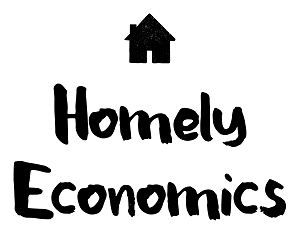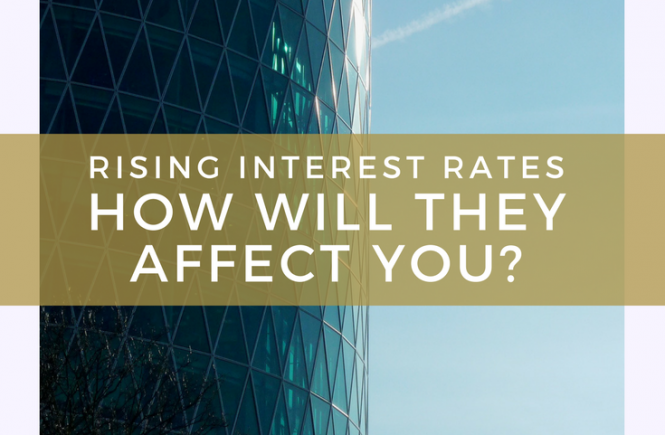I’m happy to introduce a guest post by Patty from Working Mother Life, a US-based personal finance blog.
The Effect of Rising Interest Rates
There has been a widespread discussion about the potential for interest rate hikes since the financial downturn that began in 2008, based on the growth of the economy from that point until now. While the majority of the chatter has been focused on the United States, the global economic environment is also experiencing interesting changes to interest rates for a myriad of reasons.
Within the U.S., the current interest rate set by the central bank, the Federal Reserve, is at 1.25% after an increase of 0.25% took place in June this year. Comparatively, the Australian interest rate is at 1.5%, a decrease of 0.25% from August, and the British interest rate is currently at 0.25% which is down from 0.5% in August 2016.
Following suit with America, Canada also increased interest rates by 0.25%, now at 1%, as did Mexico who moved up to 7% from 6.75%. Turkey went up to 8% from 7.5%.
Why do the rates change?
While each country is on its own timeline for interest rate adjustments, the rise and fall of interest rates remains rooted in the same fundamental economic principles. In most developed countries, the central bank adjusts interest rates down when there is a need for a spark in economic growth, like what the U.S. faced in 2008.
Why exactly? When interest rates are low, large banks have more access to borrow funds from other banks at a relatively low cost. That cost savings is passed down to consumers and businesses in the form of lower rates on loans which prompts more spending.
With more spending comes more economic growth.
Conversely, interest rates are adjusted up when the central bank wants to control the rise of inflation for a set period. For example, more spending due to a lower cost of borrowing is beneficial to year over year growth of an economy, but it also means the price of goods and services goes up year over year. This is known as inflation.
When inflation reaches a point that is above a few percent, it can erode the purchasing power of a country’s currency. The central bank, in response to increasing inflation, increases interest rates to slow economic growth, keeping inflation at bay.
How consumers (you) are impacted
The recent increases in overnight interest rates set by central banks in the United States, Mexico, Turkey and other countries have a noticeable impact on consumers. Most notably, the cost of borrowing increases for certain account types, making it more difficult to finance major purchases affordably.
Short Term Costs
For example, interest rates on credit cards are tied to the Prime Rate, which is the rate that banks offer to customers who have the strongest credit history and score.
When abroad interest rates increase, so does the Prime Rate, which ultimately trickles down to credit card interest rates. Individuals who have less than stellar credit may receive a higher interest rate on a new credit card account as interest rates increase. In most countries, shorter-term debt is impacted far more than long-term debt when interest rates are adjusted upward.
In addition to credit card interest rates, borrowers with variable interest rate loans or lines of credit may experience an adjustment to their underlying rate.
For example, some private student loan lenders offer variable rates to borrowers that are initially low, but as the central bank makes changes to the overnight rate, student loan interest rates may also rise. This can increase the monthly payment due on variable-rate loans, and it increases the total cost of borrowing over time.
Long Term Costs
Although a central bank interest rate increase may seem like bad news for shorter-term borrowers, the adjustment to rates may not have a noticeable impact on long-term rates such as mortgage loans or auto loans.
Similarly, individuals are encouraged to save instead of spend when interest rates are higher since financial institutions can offer higher yields on interest earning deposit accounts. Savings, money market accounts, and certificates of deposit are all positively impacted when interest rates rise, giving those with money in the bank reason to celebrate.
Conclusion
Overall, an adjustment to short-term interest rates should not be a cause for concern for most consumers, regardless of where they live.
Central banks are always working to benefit the economy of the entire country by making changes to monetary policy. In the months ahead, it would not be surprising if countries with steadily growing economies adjusted interest rates up again, albeit slightly. Countries with stagnant economies may experience the opposite with interest rates shrinking a small amount to help boost the potential for economic growth in the future.
Whether interest rates are on the rise, like they are in developing countries, or on a slight decline, as they are in struggling economies, no central bank is willing to rock the economic boat more than a fraction of a percentage in either direction.
Over to you!
It’s always a pleasure to read other personal finance bloggers’ posts, especially when they’re this informative. This American perspective expands on some terms explained in the US-UK Personal Finance Dictionary.
You can find out more about Patty at workingmotherlife.com.




